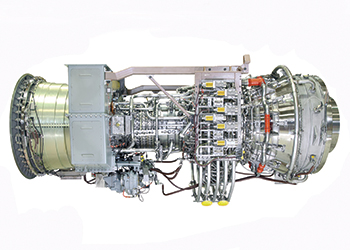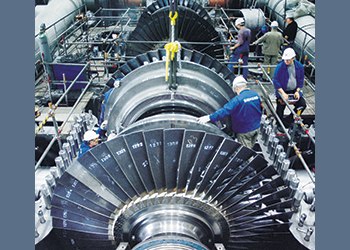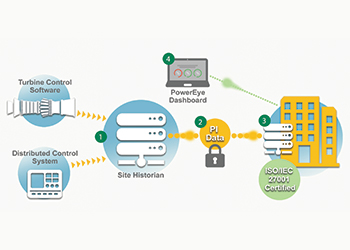
 The demand for turbines is set to grow
The demand for turbines is set to grow
Rapid industrialisation, demand for efficient power supply, and calls for cleaner power are all factors supporting the growth of the turbines market, including steam, gas and wind types
The need for a cleaner world and the keenness by governments and organisations to lower carbon emissions has propped up the global turbines market, which is set for steady growth. Various global research studies have forecast a strong outlook for gas, steam and wind turbines.
According to the global market insights and analysis firm, Research And Markets, the global steam turbine market was valued at $24.1 billion in 2019 and is projected to reach $30.2 billion by 2027, growing at a CAGR of 2.8 per cent from 2020 to 2027.
In its report, ‘Steam Turbine Market by Design and Application: Global Opportunity Analysis and Industry Forecast, 2020-2027’, the steam turbine market is expected to encounter development attribute to increase in thermal power generation and rise in demand for electric supply.
Rapid industrialisation and power demand in developing countries are factors expected to boost the growth of the steam turbine market. Other factors that drive the steam turbine market includes efficient power supply for both residential as well as industrial sectors. Steam turbines can use a variety of natural sources such as biomass and coal for steam generation, the report said.
This factor is further expected to propel the market growth. Proficiency of small steam turbines is relatively poor, which limits the market development. Accomplishment of cleaner process for control age of steam turbine is another open-door opportunity of growth, which will help the steam turbine market to propel worldwide.
The steam turbine market is fragmented based on design, application, and region. In view of design, the market is bifurcated into impulse and reaction. In terms of application, the market is fragmented into power generation, petrochemical, industrial and others.
Steam turbines have high rotational speed and proficiency and convert thermal energy into mechanical energy by using high temperature steam. These are generally utilised in petrochemical businesses, pharmaceuticals ventures, and paper plants for power generation.
Steam turbine is comprehensively characterised into impulse turbine and Reaction turbine. "Impulse turbines have fixed nozzles, which set the steam flow into high speed jets. They also absorb high velocity and high pressure. Reaction turbines are efficient at lower pressure stage. Under high pressure stage, pressure spillage is seen around sharp edge tips. Steam turbine is used for both, industrial as well as domestic application and its capacity varies from 100kW to over 250 MW," the report explained.
GAS TURBINES
The new gas turbines market for the power industry indicates negative growth in the short-term as the business impact of Covid-19 spreads, according to a study by Technavio, a leading global technology research and advisory company.
The gas turbines market for power industry is expected to accelerate at a CAGR of almost 2 per cent during 2020-24.
"One of the primary growth drivers for this market is the increase in Combined Cycle Gas Turbines (CCGT) power plants," says a senior analyst for the Industrials industry at Technavio.
He said: "The demand for combined-cycle gas turbines for power plants is on the rise due to increased efficiency and better output. Also, the introduction of the US government’s Clean Power Plan will further propagate a shift from simple-cycle to combined-cycle plants, which have lower carbon dioxide (CO2) emissions. This is because meeting the new performance standards for CO2 emissions will be difficult with simple cycle plants. Many upcoming projects for the construction of power plants have propelled the demand for CCGT. As the markets recover Technavio expects the gas turbines market for power industry size to grow by $1.65 billion during the period 2020-2024."
For 2020, the gas turbines market for power industry is expected to post a year-over-year growth rate of 0.86 per cent.
In 2019, the CCGT segment led the gas turbines market share for power industry. This was mainly driven by the increasing demand for energy-efficient gas turbines and due to the replacement of coal-fired power plants. CCGT consists of both gas turbines and steam turbines. In this system, the natural gas is the primary fuel, which powers the gas turbines to generate electricity.
The report said the gas turbines market share growth for the power industry by the CCGTs segment will be significant during the 2020-2024 period. About 56 per cent of the growth will originate from the APAC region, with China, Japan, and India being the key markets.
WIND TURBINES
In its report, ‘Global Wind Turbine Maintenance Market (2020 to 2026) - Comprehensive Analysis and Forecast’, Research And Markets said the global demand for wind turbine maintenance market was valued at approximately $12.9 billion in 2019, and is expected to generate revenue of around $28.8 billion by the end of 2026, growing at a CAGR of around 12.2 per cent between 2020 and 2026.
Wind turbines are majorly used for power generation both onshore and offshore. Onshore wind turbine is an inexpensive renewable energy source. Meanwhile, offshore wind turbines are stronger and steadier electricity generator. These are generally used to convert wind energy into power.
Small turbines are used for battery charging, traffic signals, auxiliary power for boats. Larger turbines are generally used to a domestic power supply. Wind is a renewable, clean and free source of energy. Wind turbines are one of the alternatives for power generation.
"Increasing demand for power around the world is expected to drive the wind turbine maintenance market across the globe. Stringent governmental regulations and growing awareness regarding environment is expected to drive the market within the forecast period. Increasing operational and maintenance cost of the wind turbines is expected to be a restraining factor for the market growth. Nonetheless, huge investments in wind onshore and offshore projects is expected to raise the demand for wind turbine maintenance market over the years," the report said.




















































































